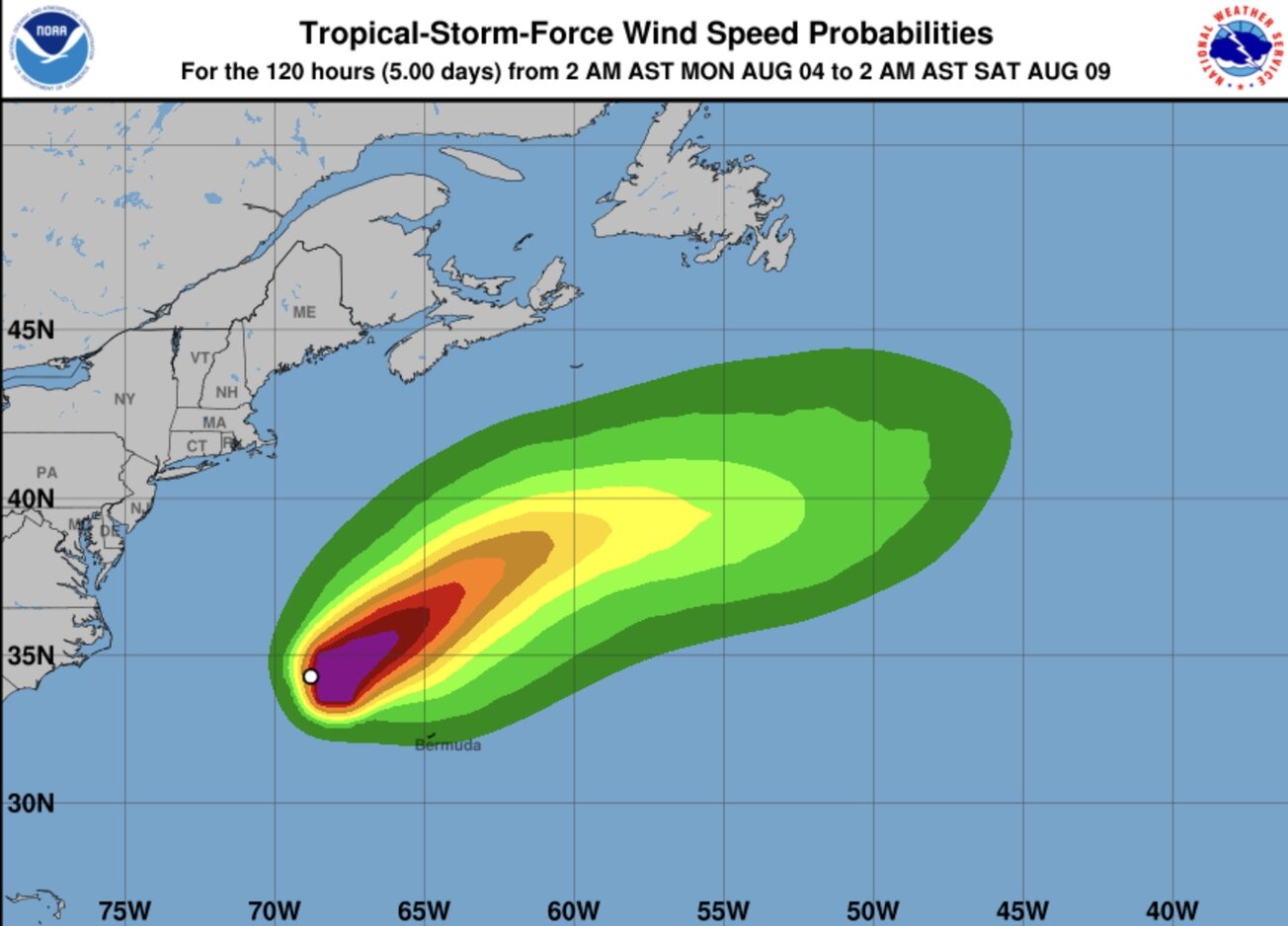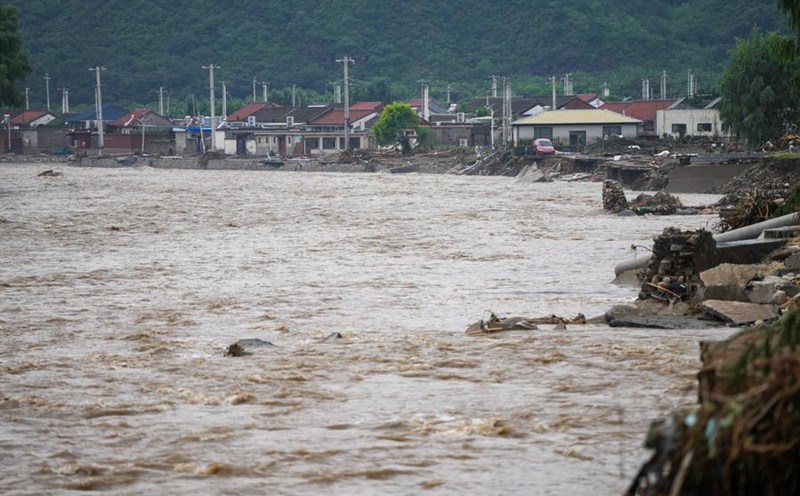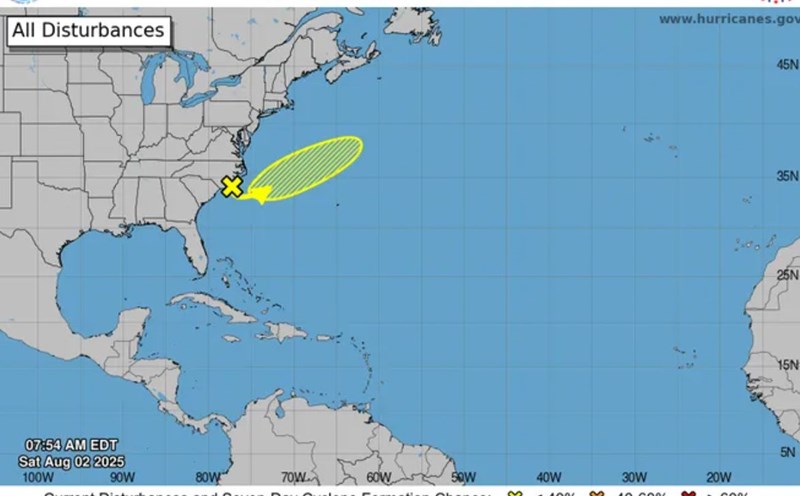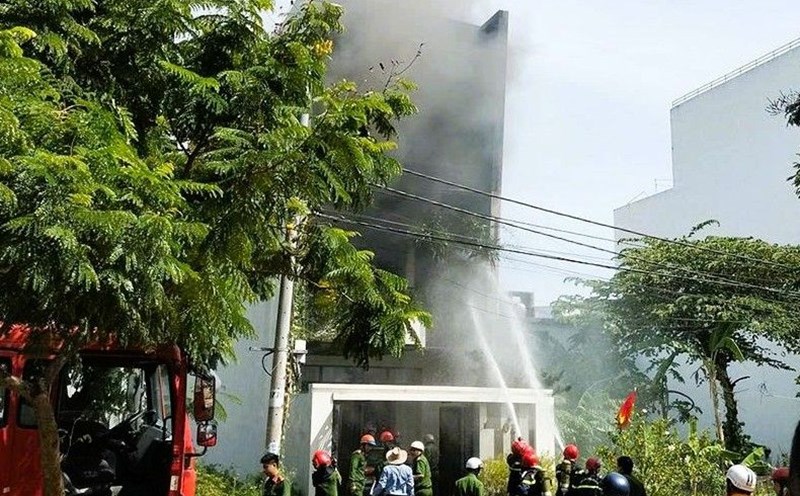The latest hurricane information from the US National Hurricane Center (NHC) said that Maximum sustained winds of storm Dexter reached 72 km/h, officially recognized as a tropical storm.
The tropical storm has maximum sustained winds of 61 to 117 km/h, higher than the tropical depression.
Storm Dexter is about 482km west-northwest of Bermuda and is moving east-northeast at a speed of nearly 19km/h.
Forecasters at the US National Hurricane Center note that the latest storm in the Atlantic will maintain a faster movement east-northeast or northeast until the morning of August 5 before moving slowly late on August 5 and August 6.
axter is forecast to move away from the US coast and impact north of Bermuda.
The storm will strengthen over the next few days before being downgraded to a tropical depression on August 6.

In addition to Justin, forecasters in the US are also monitoring two depressions in the Atlantic basin.
The low pressure on the west coast of Africa is forecast to gradually strengthen, possibly becoming a tropical depression this weekend. The depression is moving west-northwest into the mid- Atlantic. Forecasters say the system has a 50% chance of strengthening further next week.
The second low pressure system is being tracked to be several hundred kilometers off the southeast coast of the United States. This low pressure may gradually develop in the middle or the end of this week as it moves west or northwest. The system has a 30% chance of strengthening next week.
The Atlantic hurricane season runs from June 1 to November 30, with Dexter being the fourth storm of this year's hurricane season, after Andrea, Barry and Chantal. The next storms after Dexter are Erin and Fernand.
In the long-term hurricane forecast released at the end of May, the National Oceanic and Atmospheric Administration (NOAA), a managing unit of the National Weather Service (NWS), predicted that the 2025 Atlantic hurricane season will be above average, with 13 to 19 named storms appearing.
Last year, 18 were named, 11 of which became hurricanes. Five of the 11 typhoons were recorded as major storms, i.e. at level 3, 4 or 5 on the Saffir-Simpson scale.
Hurricane Beryl was one of two Category 5 storms last year, and set a record for the earliest super typhoon to form in a single hurricane season. Meanwhile, the 2025 hurricane season is one of the slowest to start in 20 years.
Last year was also one of the years when hurricanes caused the most damage in the US. The total damage caused by Hurricanes Helene and Milton was about $113 billion and killed more than 250 people.
Climate change is also affecting the amount of rainfall caused by storms. For example, Hurricane Harvey in Texas, USA in 2017 caused some areas to experience 1,016mm of rain in less than 48 hours.
Weather experts have also found that over the past few decades, storms have slowed down, affecting the same area for longer periods of time.











